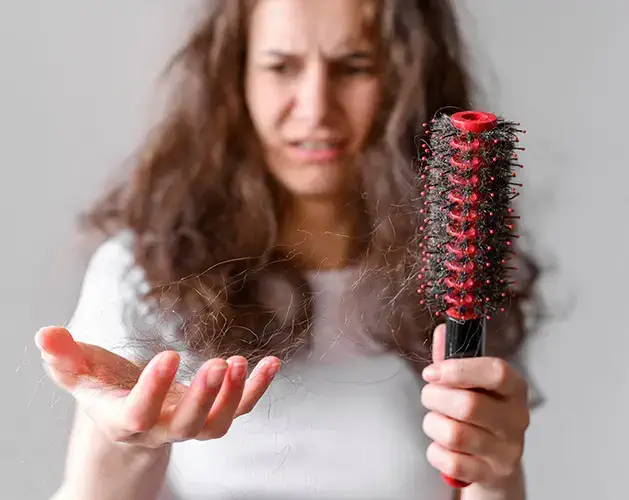
Female Pattern Hair Loss In Gurgaon
On the sides and at the top of the head, the hair becomes thinner. The patient may become aware of this occurrence in a number of ways. The separating line (line sign) is more visible when the hair is parted down the centre, and when the hair is pulled back into a ponytail, the ponytail holder becomes flimsy or requires more frequent pulling through of the rubber band. The scalp gets more apparent as the clinical picture develops and may even be completely exposed in more severe cases.
Different staging classifications have been provided to stage female pattern hair loss
- Ludwig Scale divides it into three degrees, from a modest thinning to a complete lack of hair in the affected area in the first degree to the third degree. Although popular, this scale has drawbacks because it cannot more precisely distinguish intermediate stages. Additionally, it is a poor instrument for therapeutic evaluation as even follicular transplantation is a form of treatment.
- Sinclair Scale divides the illness into four levels of intensity based on a normal scalp, making it more adaptable to the circumstances of each patient.
- Olsen Scale characterized upper bitemporal area and vertex thinning with frontal emphasis (Christmas tree pattern) in addition to the diffuse thinning process. It has an accentuation in the central line that expands into a triangle with its base at the anterior hair implantation line.
In order to effectively treat female pattern hair loss in Gurgaon, our hair experts at the clinic do a thorough examination to find out the hair loss pattern. The uses of knowing the stage of hair loss are as follows:
- Assessment of the severity of the problem
- Prediction of future progression
- Formulation of a treatment plan
- Choosing between surgical and non-surgical options or a combination
There are a lot of classification schemes out there right now, but they all have some drawbacks because they either don't cover all the stages of hair loss progression or are too intricate for everyday use. Therefore, the surgeon should evaluate each one and select the classification scheme following his or her own preferences and needs to give a fully customized solution to each patient individually.
To know more about the most effective treatment for male or female pattern hair loss in Gurgaon, schedule an appointment with Dr. Shilpi Bhadani, SB Trichology unit of SB Aesthetics, Gurugram, call us on +918130134693 or Contact Us online.




